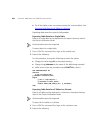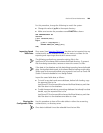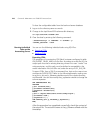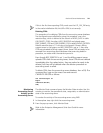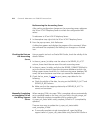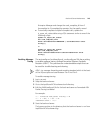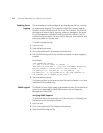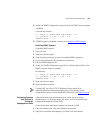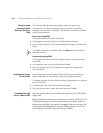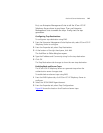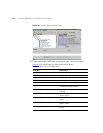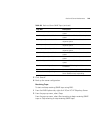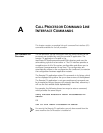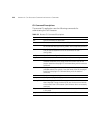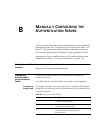
216 CHAPTER 9: MAINTAINING THE V7000 IP TELEPHONY SUITE
Reserving and
Unreserving the
Back-end Server in
EMS
The Operator Reserve command reserves either the accounting,
authentication, or directory server so that no one else can perform
operations on the server using EMS. The Operator Unreserve command
cancels the reservation.
Reserving Using EMS
To reserve the back-end server using EMS:
1 In the explorer tree, right-click the individual back-end server.
2 From the pop-up menu, click Operator Reserve to reserve the back-end
server.
If the back-end server is reserved, check the State tab to see who has
reserved the card.
Unreserving Using EMS
To unreserve either the accounting, authentication, or directory server
using EMS:
1 In the explorer tree, right-click the back-end server.
2 From the pop-up menu, click Operator Un-reserve to unreserve the
back-end server.
Updating the Server
State in EMS
Use the State command to update EMS with the current operational
state, usage state, or administration state of the back-end server.
To update the state of either the accounting, authentication, or directory
server using EMS:
1 In the explorer tree, right-click the back-end server.
2 From the pop-up menu, select State and then click Update.
Enabling Back-end
Server Traps in EMS
Back-end server traps can be enabled and disabled at the 3COM SNMP
Agent level.
Alarm notification requires two components: a device (the 3Com VCX
IP Telephony Server) to send traps and a device (an alarm server) to
receive them and alert the network manager. Traps are sent over the
Simple Network Management Protocol (SNMP), which runs on the
User Datagram Protocol / Internet Protocol (UDP/IP).



